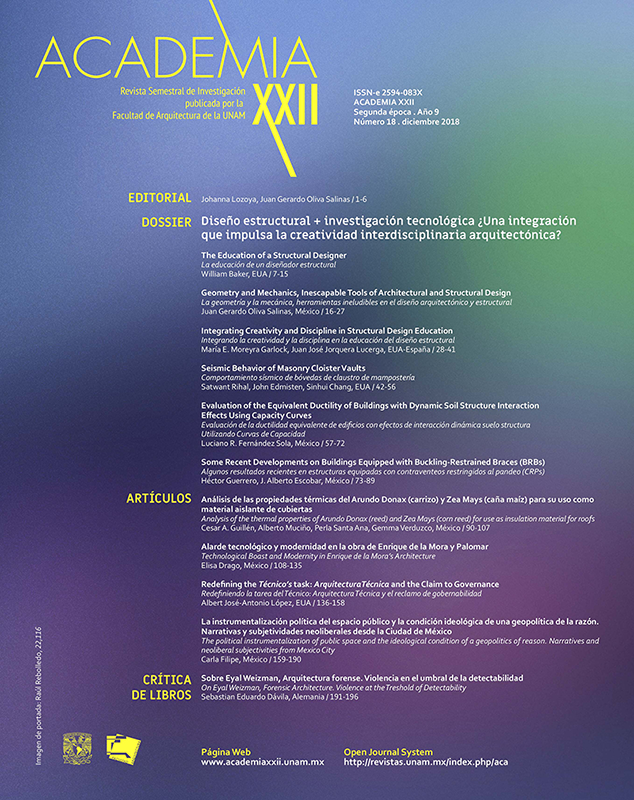Evaluation of the Equivalent Ductility of Buildings with Dynamic Soil-Structure Interaction Effects Using Capacity Curves
Contenido principal del artículo
Resumen
The analysis of buildings under seismic motion with a exible base must consider two principal aspects of structural displacement: the rst being structural deformation, the second rigid body behavior. This effect produces a modi cation of the inelastic behavior of structures. In addition, a consideration of the exible base may change the distri- bution of internal forces along the structure that could generate vari- ations in the ductility demands on different structural elements. This article summarizes the results of previous studies on variations in the inelastic behavior of steel and reinforced concrete structures, taking dynamic soil structure interaction into consideration. The response of buildings with a exible base is compared and contrasted with those with rigid bases. The inelastic behavior of buildings is set out in terms of ductility capacity and demands. Pushover analysis is used to establish inelastic capacity parameters by comparing the capacity curves of buildings with rigid ( xed) and exible bases. Some comments and general guidelines are made about how base exibility in uences the inelastic behavior of structures.
